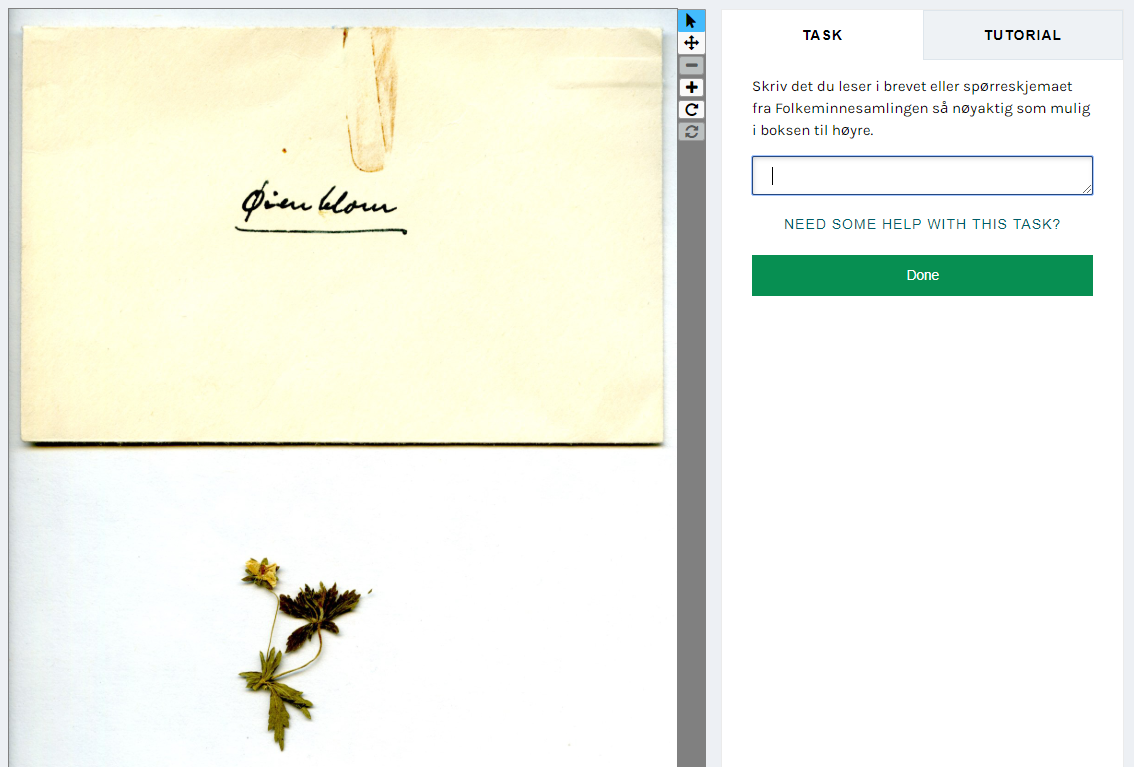
Throughout history, human interference has affected plant diversity. The Viking age is of particular interest. Plants, animals and people moved across vast distances during the Viking age. However, we have little knowledge about plant use during this period.
Written sources – a door opener
Plants have influenced how humans eat, dress and build their homes. In this project, we will search through different written sources. Such as plant names, archaeobotanical reports, iconographical sources and textual descriptions. We will examine cookbooks, black books, floras and fairy tales. Is there a common usage in different sources? This might give us a clue to plant use in periods with no data.

When did plants arrive, what were they used for and how were they prepared?
We want to understand how humans have affected plant diversity in the past. By use, cultivation, transport and trade. Today’s weeds were yesterday’s valuables. We believe that increased plant knowledge among people in general is key to safeguard our Nordic plant traditions. Perhaps a Viking “weed” will form the basis of a staple food in the future.
A cultural evolution
We want to trace the cultural evolution of plant use from before the Viking age to today. How will we do this? We will collect and systematize information from written and iconographic sources. This information will constitute the basis for an open access plant-use-database. This database will enable further analyses, such as phylogenetics. In this case, the phylogeny will be based on cultural traits (as opposed to genetics), such as words, plant names and uses. Calibrated in the end, by plant knowledge.
Human – plant interactions
People depend on plants for food, fodder, medicine and materials. Plant use has influenced biodiversity and sometimes caused plant extinctions. A current worldwide decrease in plant diversity threatens ecosystems, and human health. Scandinavia has a limited number of threatened plants compared to other areas. People living here maintain a close relationship with nature and plants. Scandinavia is therefore an ideal place for studying past and current people-plant-dynamics. As a part of the project, a master student will be looking at the effect and sustainability of harvesting edible plants.

Citizen science
Parts of the project rely on interaction with nonprofessionals. With a citizen science approach, the aim is to increase plant knowledge among people in general. Furthermore, the project is a collaboration between the humanities and natural sciences. This cooperation is necessary for a comprehensive understanding of human relationships with plants.
Would you like to contribute?
Are you good at reading norwegian hand writing from the 1930s, 40s or 50s? Do you have an interest in plants, plant use or perhaps beer brewing? Then you are welcome to help us by transcribing written texts. Or if you have personal experience with the use of plants, we would love to hear about it.

Funding and collaborators
Nordic People and Plants is a research project funded by the SAMKUL program of the Research Council of Norway. The project is run by Natural History Museum in collaboration with the Historical museum (2018-2021). Other collaborators are the Max Planck Institute, the University of Bristol, Maemo Restaurant and the Norwegian Association for Mycology and Foraging (Norges Sopp- og nyttevekstforbund, NSNS).
Publications
Teixidor-Toneu, I., Kjesrud, K., Bjerke, E., Parekh, K., Kool, A. 2020. From the “Norwegian Flora” (Eighteenth Century) to “Plants and Tradition” (Twentieth Century): 200 Years of Norwegian Knowledge about Wild Plants. Economic Botany https://doi.org/10.1007/s12231-020-09507-y
Teixidor-Toneu, I., Kjesrud, K., Kool, A. 2020. Sweetness Beyond Desserts: The Cultural, Symbolic, and Botanical History of Angelica (Angelica archangelica) in the Nordic Region. Journal of Ethnobiology 40.3 (2020): 289-304. https://doi.org/10.2993/0278-0771-40.3.289
Read more: (in Norwegian)
Rasende vikingkrigere kan ha vært i urte-rus, forskning.no (27. september 2019)
Forskere tror vikingene spiste mer planter enn kjøtt og fisk, aftenposten.no (7. september 2019)
Kartlegger bruk av planter fra vikingtiden til i dag, forskningsdagene.no (7. september 2019)
Disse blomstene spiste vikingene radio.nrk.no (27. august 2019)
Vikingenes urtehager blir gjenåpnet av forskere, forskning.no (19. februar 2019)
Forskarar skal spore plantebruk tilbake til vikingtida, nationen.no (20. februar 2019)
Pesthåndbøker og magiske oppskrifter åpner porten til vikingenes urtehager, titan.uio.no (25. januar 2019)
Stort tverrfaglig prosjekt skal lære oss om vikingenes plantebruk, nhm.uio.no (17. oktober 2018)
Får millioner for å se på samlivet mellom mennesker og planter, titan.uio.no (11. juni 2018)
Millionstøtte til nytt tverrfaglig forskningsprosjekt ved Naturhistorisk Museum, nhm.uio.no (10. juni 2018)
Vikingenes grønne arv strutter av liv og lære, aftenposten.no (4. juli 2015)
Forskere skal kartlegge vikingenes plantebaserte kosthold, abcnyheter.no (7. september 2019)
Learn more: (in English)
Teixidor-Toneu, Rediscovering and Safeguarding Nordic Ethnobotanical Heritage, 1h Lecture at Studium Generale, Wageningen University (28. january 2020)



